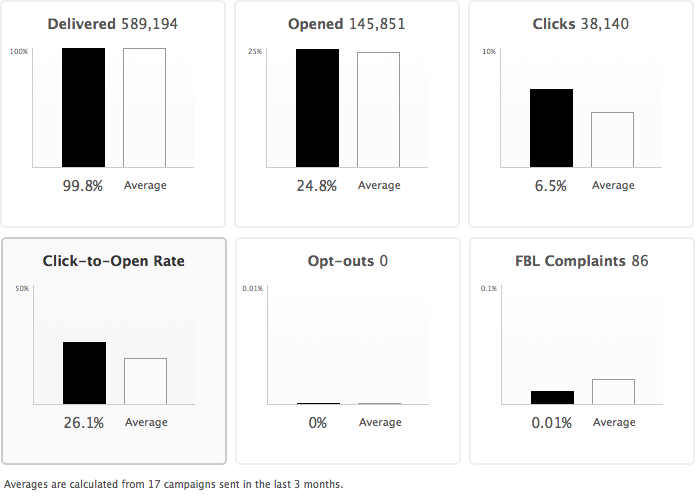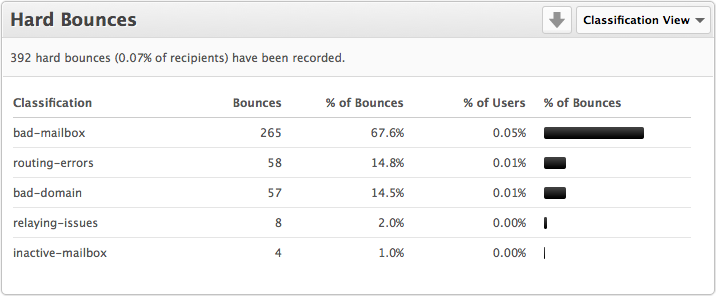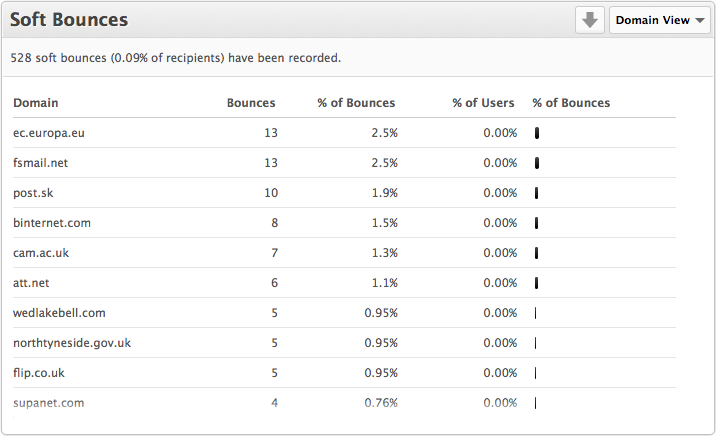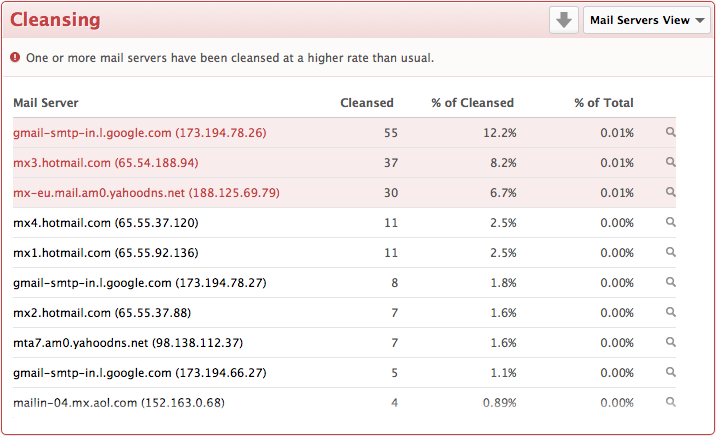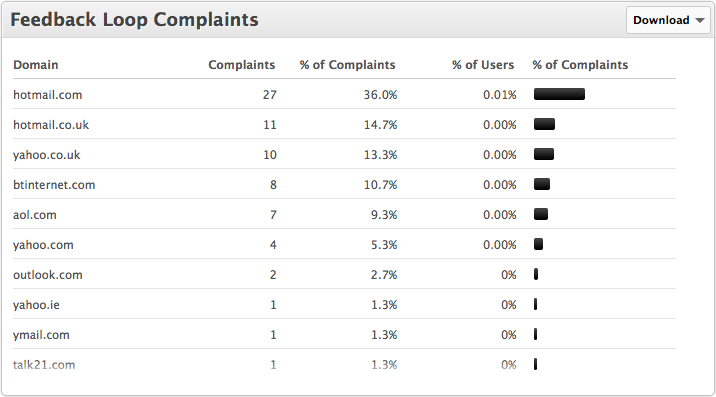In the second of this two part series on email reporting (the first can be found here) I am going to look at delivery reporting, what it means and how it affects your email campaigns.
Delivery reporting – what is it and how can you use it to improve your list health (which ultimately improves future inbox placement and subsequently ROI)? The first thing to look at is a reporting overview to give you a snapshot of your campaigns.
This should immediately highlight any causes for concern. The numbers you are looking at here are delivered, anything under 98% for an opt in list should lead you to look at the reasons the undeliverable number is above 2-3%.
Whether the main culprit is hard or soft bounces you need to look at and understand the reasons why. The first check is to see if this happens across all campaigns so run a campaign comparison style report, which will highlight if this is an isolated incident or a trend.
If you have high hard bounces it suggests an underlying problem with your data or your data collection processes. Inaccurate and old data can be a stranglehold on successful email marketing and inhibit the performance of the good data because it has a negative impact on your inbox placement or whether you get delivered at all. Certain hard bounces, specifically “unknown user” and “invalid mailbox”, should be treated as permanent rejections and should be removed from your list immediately and will make the whole list stronger as a result.
Soft bounces are generally not fatal, but suggest that all is not well and you’ll need to delve deeper to determine the cause. A good starting point here is domain based analysis. Some ESPs will provide you with classification reports, outlining the type of bounce, be it spam related, policy related, content related or any of the many bounce classifications (as seen above), but also domain based reporting to highlight where you have a problem with a specific mailbox provider.
If you do have an issue with a specific mailbox provider then it is almost certainly to do with your reputation as a sender which is derived by content, complaints and, you guessed it, bounce numbers. Also in the mix and an equally important part is user engagement – how many of your list are opening your emails and clicking on the links. In order to improve user engagement you can undertake a number of actions, one which is proving successful is to send responsive emails which change based on the device they are read on. Give people a good user experience and they will engage with you more. Another is to make sure you are sending personalised content so talk to your users on a one-to-one level and they are more likely to stay engaged for longer.
If the mailbox provider you are having delivery issues with is one of your major data sources you may also wish to rethink your contact strategy to that particular domain. Are you mailing too frequently or worse too infrequently? People can easily forget they registered to receive your email and if your contact strategy is once a month… well 30 minutes is a long time online, let alone 30 days!
Your ESP ought to be able to help cleanse your email data with a set of rules in place to help save you from resending to email addresses which will permanently fail but which you may have not got round to removing manually. A cleansing report will also highlight domain or server based issues and allow you to spot where you may have been the victim of a false bounce – one where the receiving mail server has rejected more of your emails than usual. In extreme cases it may simply be down to internal server issues at the mailbox provider so removing huge swathes of data as a result of these types of bounces would be a mistake and your ESP should give you the functionality to override or reinstate these suppressions.
Finally, Feedback Loop (FBL) complaints, which occur when your email recipients have told the mailbox provider that they have received spam from you by moving your email to the junk folder or simply marking as spam. When this occurs the mailbox provider will notify your ESP to remove that address (assuming they have signed up). Getting even a fraction of a percent in complaints can have a negative impact on your delivery and should be taken seriously. Most good ESPs will globally suppress your FBL complaints for you to prevent the recipient receiving your messages again, preventing serious deliverability issues down the line.
Should your FBL report start to creep up to the 0.03% mark, you should spend some time trying to work out what is causing you problems and how to improve both the hygiene of your data and the engagement of your users.
*All data is taken from real campaigns and the percentages haven’t been changed, although the raw numbers have been removed



